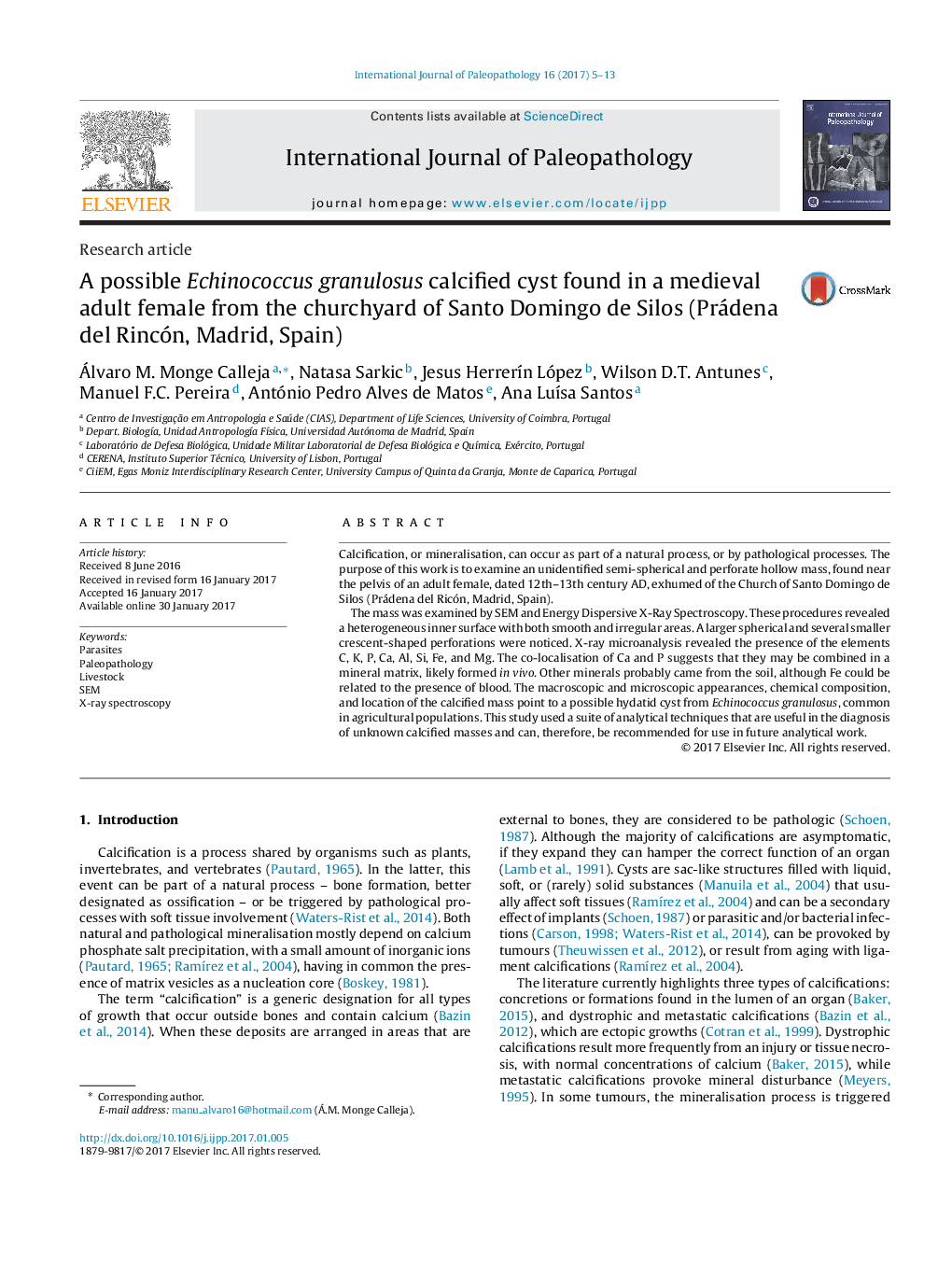| Article ID | Journal | Published Year | Pages | File Type |
|---|---|---|---|---|
| 4760558 | International Journal of Paleopathology | 2017 | 9 Pages |
Calcification, or mineralisation, can occur as part of a natural process, or by pathological processes. The purpose of this work is to examine an unidentified semi-spherical and perforate hollow mass, found near the pelvis of an adult female, dated 12th-13th century AD, exhumed of the Church of Santo Domingo de Silos (Prádena del Ricón, Madrid, Spain).The mass was examined by SEM and Energy Dispersive X-Ray Spectroscopy. These procedures revealed a heterogeneous inner surface with both smooth and irregular areas. A larger spherical and several smaller crescent-shaped perforations were noticed. X-ray microanalysis revealed the presence of the elements C, K, P, Ca, Al, Si, Fe, and Mg. The co-localisation of Ca and P suggests that they may be combined in a mineral matrix, likely formed in vivo. Other minerals probably came from the soil, although Fe could be related to the presence of blood. The macroscopic and microscopic appearances, chemical composition, and location of the calcified mass point to a possible hydatid cyst from Echinococcus granulosus, common in agricultural populations. This study used a suite of analytical techniques that are useful in the diagnosis of unknown calcified masses and can, therefore, be recommended for use in future analytical work.
